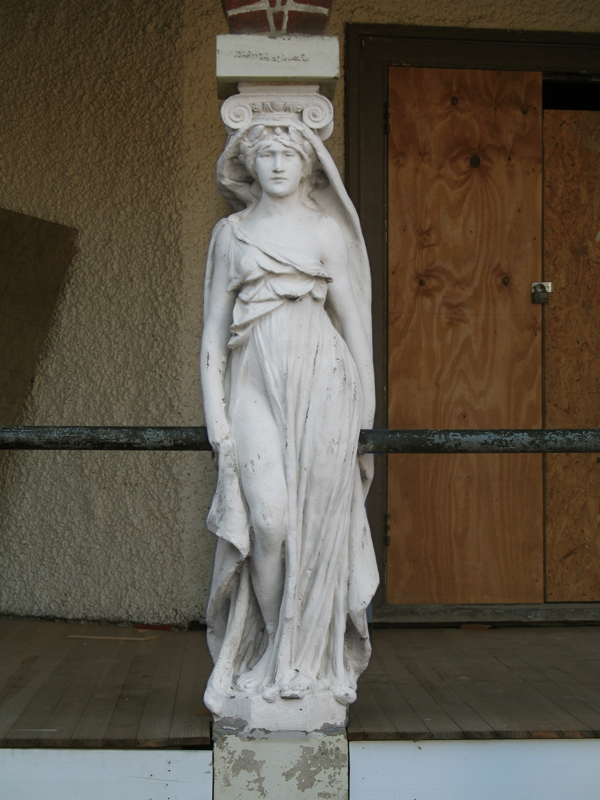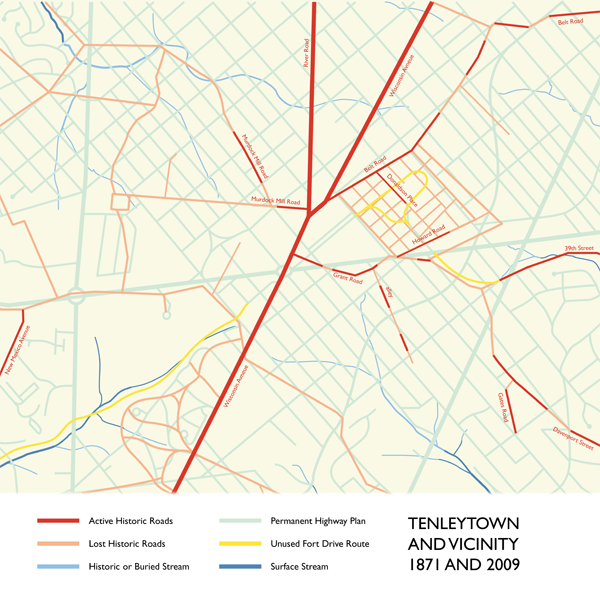Hidden among a leafy scattering of houses and trees, Forest Glen Seminary is a jumble of vernacular buildings unlike any of the temples of boxes that define Washington. Its buildings, both magnificent and ludicrous amount to a dignified campiness that defies expectations to be one of the most profoundly interesting places encircled by the Beltway. Once constituting a women’s college when that meant a two-year Mrs. degree, the buildings are once again becoming domestic space, the more private areas cut into condos and the core of the complex, rental units. Scattered around the area, turn-of-the-century houses are being renovated and new housing by the urbanist developer EYA has just been finished. Through the site’s history, radical changes have shaped its form, but none so radical as the current shift in context.
Tag: time
April 9th, 1865
 Let us remember the handing down of of the deadliest precedent in constitutional law on this, its 144th anniversary.
Let us remember the handing down of of the deadliest precedent in constitutional law on this, its 144th anniversary.
Streets through time and place
 I noticed yesterday that DC has re-signed Murdock Mill Road, down off River Road in Tenleytown. It’s a nice little reminder of history – and of natural geography – among the rationalist streets of the city plan laid down in 1897. While those straight, predictable lines make navigating the city easy, they did erase the context and history of what was Washington County. By its perseverance, this little snippet of prior use reminds residents of the pre-urban past, adding quiet character to the neighborhood.
I noticed yesterday that DC has re-signed Murdock Mill Road, down off River Road in Tenleytown. It’s a nice little reminder of history – and of natural geography – among the rationalist streets of the city plan laid down in 1897. While those straight, predictable lines make navigating the city easy, they did erase the context and history of what was Washington County. By its perseverance, this little snippet of prior use reminds residents of the pre-urban past, adding quiet character to the neighborhood.
The road itself is no larger than an alley – its form preexists both the automobile age and the dreams of a residential garden city, so there are neither sidewalks nor setbacks. It is discontinuous, with one part behind the old Sears Building and the other appearing a few blocks to the west before becoming Butterworth Street. It’s also completely secondary: Where the narrow eastern section intersects with 42nd Street, the heavy grading on the latter route necessitates a concrete retaining wall and a stairway down from Murdock Mill Road, ten feet above. It is very dislocated; left inexplicably during the changes of urbanization, along with the Methodist Cemetery, its only active address.
The road once headed down in the direction of Massachusetts Avenue, following a creek of the same name. Before the imposition of the 1897 Permanent Highway Plan, Murdock Mill Creek began at the west of Tenleytown, and cut through a subdivision of small farms registered as part of Friendship, and finally into what is now the Dalecarlia reservoir. Now, the stream is undergrounded, emerging only from underneath 52nd Place in northern Spring Valley. Other streams have been buried; still more roads have disappeared when developers carved up the farms they existed to serve. Murdock Mill Road is only one of these many streets, some of which are still used.

